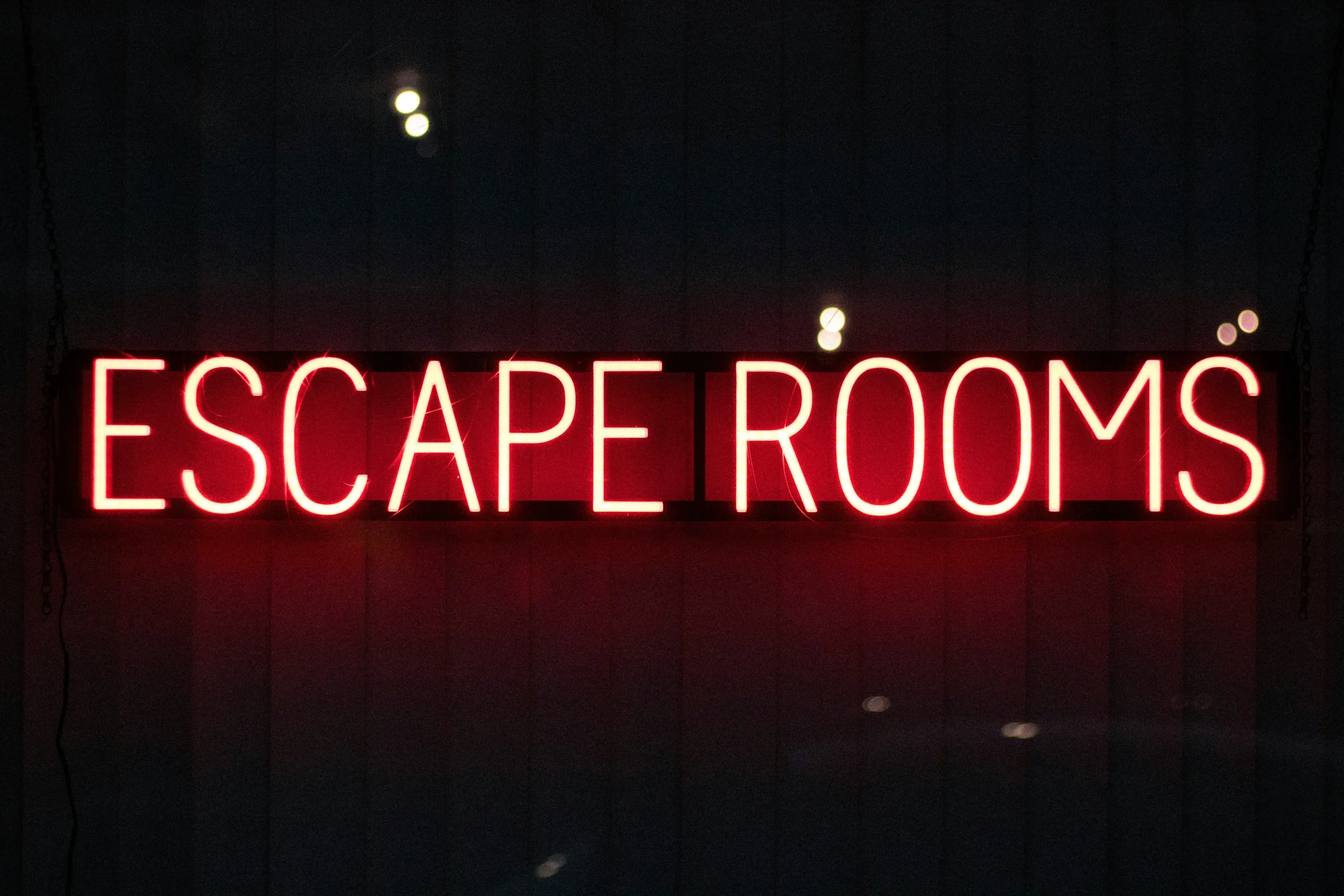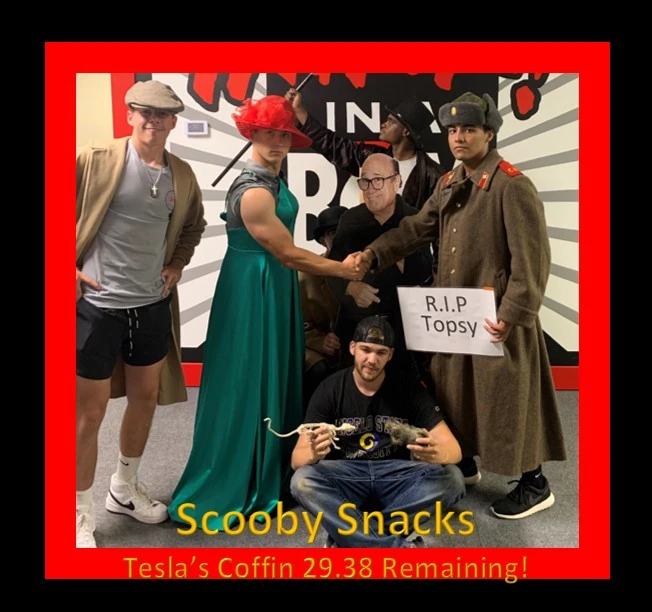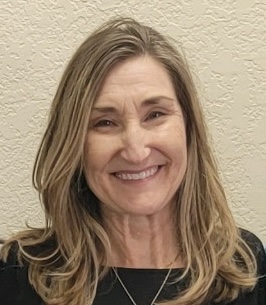
An escape room is a live, interactive game where players solve puzzles, find clues, and complete challenges to achieve a specific goal, usually escaping the room, within a set time limit. These themed experiences often involve immersive storylines, encouraging teamwork and critical thinking.
For example, at Think in a Box in San Angelo, TX, participants enter intricately designed rooms with engaging narratives. Rather than just racing against the clock, players become part of the story, enjoying a thrilling and safe adventure. Escape rooms offer an exciting way to test problem-solving skills while having fun with friends, family, or colleagues.
How Does an Escape Room Work? The Basics
Escape rooms offer adventure, teamwork and a chance to created lasting memories. Our goal always is to challenge and engage you without frustration. Here’s a breakdown of how escape rooms typically work…
Select a Theme/Storyline
Every escape room begins with a story. Unlike one-size-fits-all experiences, Think in a Box designs its rooms in-house, ensuring every theme is unique and immersive.
Here’s a glimpse into some of our most escape room challenges:
🔮 Monkey Slime – A magician’s disappearing act went wrong, and now the circus animals are missing! The show starts in one hour—can you recover them in time?
🏚 Gold Rush Cabin – Old Bill’s gold is still out there, hidden deep in his abandoned cabin. But something doesn’t feel right… is his ghost watching you?
⚙️ Industrial Chaos – The factory’s boiler is on the verge of exploding, and you’re locked inside. Can you stop the catastrophe before it’s too late?
🔋 Tesla’s Coffin – Nikola Tesla’s family believes his body was never cremated. Who took his missing notebooks?
🔎 The Franchise – You’re an undercover agent sent to sign a contract… but why are you really here, and is your cover blown?
⏳ Kevin’s Time Machine – A high-tech mishap has sent Kevin somewhere in the future. Can you retrieve an isotope to bring him back?
Each room features a different set of puzzles, challenges, and unexpected surprises. No two games are the same!
Meet Your Game Master
Before stepping into the room, you’ll be introduced to your Game Master—a guide who ensures your experience is both fun and fair.
Your Game Master will:
✔ Explain the rules and safety guidelines
✔ Provide backstory and set the scene
✔ Offer hints if your team gets stuck
Think of them as the director of your interactive movie. They’re there to immerse you in the adventure while ensuring everyone has an amazing experience!
Receive Your Mission
As you step into the room, the door closes behind you. The timer starts ticking. You scan the room, everything looks ordinary, but nothing is as it seems.
Your mission could be anything from solving a murder mystery to disarming a “bomb.” But there’s only one way forward: teamwork, logic, and creativity.
Common Escape Room Challenges Include:
🔑 Hidden Objects – Keys, maps, or artifacts might be tucked inside drawers, under tables, or even behind paintings.
🔐 Lock & Key Puzzles – Some locks require codes, some need keys, and others demand outside-the-box thinking.
🧩 Pattern Recognition – Are the symbols on the bookshelf a random design or a secret code?
🎭 Role-Based Challenges – Sometimes, only one team member can see a clue while others must describe what they see.
📜 Riddles & Logic Puzzles – A riddle might reveal a secret compartment—if you can decipher it in time!
💡 Example:
In Tesla’s Coffin, your team finds an old telegram with strange markings. Are they just decorative, or do they contain a hidden numerical pattern leading to Tesla’s missing notebooks?
Escape the Room
You will use a combination of strategic thinking and teamwork to escape the room. Communication, (Both talking and listening!) is a must. Some players will excel at different types of puzzles but there will be something for everyone. All players will contribute your group’s success. You need a mix of thinkers, communicators, and leaders. Teamwork is key, and roles often emerge naturally as each person brings unique strengths to the table.
The Ultimate Goal
To escape, you need to solve every puzzle or problem depending upon the theme. You will find clues and complete your mission within the 60-minute window. The race against the clock adds excitement, but remember that you are there not just to win, but also to enjoy the experience. It might sound corny and cliché but it’s not the destination it’s the journey. Yeah right! It’s always a competition!
Escape Room Tips
To help you make the most of your escape room adventure, here are some tips and tricks…
Dress for Comfort
Escape rooms sometimes require a little physical activity, like crawling, or perhaps squeezing through tight spaces. Dress in comfortable clothes that allow you to move around easily. Sandals and open-toed shoes are fine. Some rooms require more “flexibility”.
Proper Communication
Sharing your discoveries and ideas with the group is key. Spot a clue? Call it out. Think you solved a puzzle? Tell everyone! Some more serious teams have at least one person to track progress and keep tabs on what’s solved and what’s still pending. Don’t be the person that holds onto something without telling the team!
Team Collaboration
There is no “I” in team. A successful escape requires teamwork. The more creative and open-minded your group, the better you’ll do. If you want to successfully escape you must trust in each other, and work together to think outside the box.
Family groups are terrific as they have no filter. We love the interaction! Players are comfortable saying whatever comes to mind and this is incredibly powerful in unlocking the creativity and thought processes of every player in your team.
Thoroughly Check the Room
Every corner, drawer, and shelf could hold a clue. Don’t leave any stone unturned. It’s surprising how often a hidden key or message can go unnoticed in plain sight. Things can often be hidden with time. Sometimes something is found early on but not used until much later.
We often hear players suggest that something is a “red herring” or a “distractor”. We will never lead you down a rabbit trail but if absolutely every thing in a room directly ties to a puzzle, the theme will be very “dry”. Some things are there to create the scene and immerse you. Usually these items will not have numbers or letters to confuse you but may be there to give you a choice. If a multiple choice test has only one answer, it is not much of a test! Remember is is an escape room not an escape room box game.
You will always be able to move throughout the entire space of your room. Nothing is going to “lock” behind you. Hmm… maybe we should change that…
Organize Your Clues
Gather clues in one spot but be prepared to move it if things change. This help you to avoid losing something you need. Organization is key! BUT please do not pile everything in a single spot when you think you have finished with it. It is fine to be organized but a nightmare to reset a room when everything is dumped in a single pile. This is also how items get damaged. Codes and puzzles will not be repeated within a room or in even another theme but no one ever told us not to reuse things.
Look for Patterns
Sometimes where you find something can suggest the solution and keep an eye out for patterns or sequences that may be pointing you in the direction of a solution. However, personal experience has taught us that the position of a movable object cannot be key to solving. A younger or inexperienced player may inadvertently move an item and if its location was key to the puzzle, that is frustrating rather than challenging. We promise not to do that to you!
Positive Mindset
Escape rooms are designed to be challenging, so keep things lighthearted. Frustration can hinder performance, but a good attitude will keep you loose and allow you to spot solutions more easily. This cannot be stressed enough. Think in a Box is thinking play for adults. Allow yourself to be immersed and have fun!
Themed Rooms & Storylines
Our customers love the variety of themes and our stories. We do too. Telling the story and watching your response as you begin to understand what is going on is one of our favorite parts. It should be fun for you too! Think in a Box does not have the same themes as other escape rooms. We develop each of our rooms and puzzles to be unique from our other themes or those from our past. That makes it challenging and interesting for us all!
- Monkey Slime – Some of the animals are missing and so is the magician. Oh no! The lion is not in his cage!
- Gold Rush Cabin – We know the gold is still in Old Bill’s cabin and we are pretty sure he is dead…
- Tesla’s Coffin – Nikola Tesla’s family does not believe his body was cremated. Who took his missing notebooks?
- The Franchise – You are in the Middle East to sign a contract but why are you really there and are they onto you?
- Kevin’s Time Machine – Iron man has been kidnapped and Dr. Yinsen needs an isotope from the future but Kevin is not available. Can you save Tony Stark?
- Industrial Chaos – The boiler is about to explode. Management said to lock you in so you save the plant or die trying. Seems wrong but players always laugh!
Each room has a different twist, and as you progress, you’ll uncover pieces of the backstory that make the adventure even richer. Exploring each unique theme is half the fun!
Escape Rooms Are Great for Special Events
Escape rooms are perfect for all kinds of celebrations. They’re an exciting way to bring people together and create lasting memories. Groups of up to 8 can go into the same theme but bigger groups can play multiple rooms starting at the same time. Call and we will adjust to suit your schedule and group size.
Family Reunions and Celebrations
For families looking for an activity everyone can enjoy, escape rooms offer a way to work together on a shared goal, with plenty of laughs along the way. We have several families that meet in San Angelo and do several rooms each year. We appreciate our customers.
Team-Building Activities
Escape rooms are the epitome of team-building for work or other groups. They help build communication and cooperation skills, bringing everyone closer as they solve problems together and create a positive, shared memory. Call and we can open for you anytime. We have had larger companies send employees throughout the day or over several days. With planning, we can “lock” up as many as 30 players at any one time.
Birthday Parties
Celebrate a birthday with a room full of puzzles and mysteries. It’s the perfect way to create a birthday party that provides lasting memories. Even groups of children as young as age 10 can enjoy Monkey Slime with an adult. Adult birthday parties can choose from all of our themes.
Personal Milestones
Why not celebrate a big achievement with an escape room? It’s a unique way to mark the occasion and share the fun with friends and family. If you complete all of our current rooms, we will make you a BoxStar and put your picture on the wall. Some of our BoxStars have completed 12 rooms with us. Thank you for believing in us!
A Brief History of Escape Rooms

🔹 The first escape room concept started in the early 2000s with point-and-click adventure games like The Crimson Room (2004).
🔹 In 2007, Takao Kato created the first real-life escape room in Japan, sparking a worldwide trend.
🔹 By 2012, escape rooms had spread to the U.S., quickly becoming a favorite team-building and entertainment activity.
🔹 Today, there are thousands of escape rooms worldwide, each offering unique, immersive experiences.
FAQs About Escape Rooms
If you’re new to “escaping”, you might have a few questions. Here are some of the most common ones.
Are You Locked In?
Nope, you’re never truly locked in. You’re free to exit anytime for a bathroom break or if you need a moment. Escape rooms are designed for fun, not stress. We discourage leaving as it breaks the immersion but we want everyone to be comfortable. If a young child is uncomfortable, we are happy to let you play with the door open or we can invite the child into the control room to observe and participate in a unique way.
We had a large group of Wounded Warriors in a couple of years ago. Several had dogs and some were there to be part of the group but were nervous about participating as they did not know how they might react. We suggested they leave the door open. All of the Warriors went into the rooms and ultimately closed the door to play as the dogs settled in to watch the players and each other. It was a heart-warming experience.
How Do You Escape?
To “escape,” you need to solve a series of puzzles and complete the mission. It’s all about working through clues, unlocking codes, and finding hidden items that lead to the final solution.
What If You Don’t Finish in Time?
If time runs out, it’s no big deal. Your Game Master at Think in a Box, will let you see the solution or explain any puzzles you missed. You are welcome to try again but we encourage this with groups where everyone has been in the room before. When one player knows the answers, they will often inadvertently spoil the fun for the rest of the group. Most groups will finish in time but some just need a little more help.
Is There a Minimum Age Requirement?
Most escape rooms have a recommended minimum age, often around 10 or 12 years old. But at Think in a Box we know it is important to include everyone. Younger children will need supervision or an adult to assist with puzzles. Monkey Slime and the Gold Rush Cabin are better suited to younger players. Please call and we can help with your room choice. There is a lot of difference between a family group with some young children and a group of 10 year-olds! Younger family members can participate and have fun but we are not appropriate for a group of children under age 11.
Are Escape Rooms Scary?
They can be. This is completely theme dependent. Again, think Hardy Boys not Saw. Tesla’s Coffin and The Franchise are a little “dark”. When we hear a scream, it is usually followed by laughter. Mot of our stories are a light-hearted adventures. You will always wear the white hat and be the good guys. Please ask about the theme if you’re concerned, and choose a room that matches your comfort level.
Ready to Book an Escape Room With Think in a Box?

Whether you’re a first-time player or an escape room enthusiast, Think in a Box offers San Angelo’s most exciting adventures.
🔓 Book now and see if you have what it takes to escape!
Check out our page for FAQs or
Call us** at 325.650.1755 or send a text.**
ThinkinaBoxTX@gmail.com
Visit us at 123 E Concho Ave
San Angelo, TX 76903

